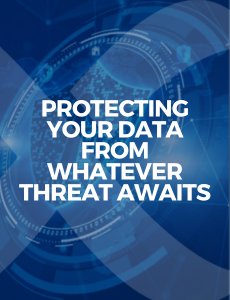Disclaimer: This blog post was written when Quantum Xchange was focused on building and selling the first quantum network in the U.S.
We have since pivoted our business and product offering, with the invention of Phio Trusted Xchange (TX), a first-of-its-kind quantum-safe, out-of-band key delivery system. While our technology offering can support QKD deployments, we are not a quantum communications provider or reseller. Our quantum-safe key exchange supports quantum keys generated from any source(QRNG or QKD) protected by any method (all PQC key encapsulation algorithms).
Quantum Key Distribution (QKD) is getting a lot of attention these days, particularly among cybersecurity experts – and rightfully so. Currently, traditional encryption methods are threatened by the emergence of quantum computers, so we need a more secure means of encryption.
Enter QKD: the provably secure method of exchanging encryption keys between two entities based on the well-accepted and verified laws that govern quantum physics.
In fact, the Quantum-Safe Security Working Group recommends QKD as one of the technologies “to protect and future-proof data against developments to computer power, new attack strategies, weak random number generators, and the emergence of quantum computers.”
How Does QKD Work?
QKD works by transmitting millions of polarized light particles (photons) over a fiber optic cable from one entity to another. Each photon has a random quantum state, and collectively all the photons create a bit stream of ones and zeros.
Quantum key distribution (QKD) is the only provably secure communication method because it uses physics – not math – to encrypt data.
@Quantum_Xchange
When the photons arrive at the endpoint, the receiver uses beam splitters (horizontal/vertical and diagonal) to “read” the polarization of each photon. The receiver does not know which beam splitter to use for each photon and has to guess which one to use. After the receiver tells the sender which beam splitter was used for each of the photons in the sequence they were sent, the sender then compares that information with the sequence of polarizers used to send the photons. The photons that were read using the wrong beam splitter are discarded, and the resulting sequence of bits becomes a unique optical key that can be used to encrypt data.
What makes QKD unbreakable?
The security of QKD stems from the ability to detect any intrusion on the QKD transmission. Because of the unique and fragile properties of photons, any third party (or eavesdropper) who tries to read or copy the photons in any way will change the photons’ state.
The change will be detected by the endpoints, alerting them that the key has been tampered with and must be discarded. A new key is then transmitted. Moreover, since the keys generated are truly random, they are protected from future hacking attempts.
Expanding QKD Into Networks
QKD has been evolving since the 1980s, but the efforts toward making it commercially viable have recently increased in earnest as quantum computers are now becoming more of a reality within the next 5-10 years. The fragile nature of quantum particles presents many inherent challenges for this technology that scientists worldwide are working to overcome; but they’re making progress. As a sign of that progress, quantum networks have already started emerging in Europe, China and the U.S.
Just last year, Quantum Xchange launched Phio, the first quantum communication network in the U.S. The network currently connects back office operations in New Jersey to Manhattan, but plans are in place to expand it across the U.S. by the end of the year.
One of the challenges for QKD is the distance over which the photons can travel, which is typically around 100km. Quantum Xchange developed a way to increase the range of QKD transmissions beyond 100km through the use of its proprietary Phio TX technology. This extends the range by decrypting the transmissions into classical bits and then encrypting them again with quantum bits to transmit further on the fiber network.
The Quantum Xchange Phio TX is composed of two or more conventional QKD system endpoints located within a common secure housing. As long as a continuous path of trusted exchanges links two widely separated endpoints, those endpoints can still share quantum-derived key information over this much longer path. Between consecutive nodes, key information is protected by the same quantum mechanisms as a singular QKD system. While within a node, key information is protected by encryption with locally-generated keys and a secure boundary that prevents tampering. Since Phio TX can include a number of QKD endpoints, the network topologies that can be realized by the trusted exchanges are essentially limitless.
What is the future of quantum key distribution?
As technology improves, progress will continue towards overcoming the challenges posed by QKD, increasing the prospects for making QKD mainstream and available to those who need it, where they need it. Companies like Quantum Xchange recognize the potential in the technology to future-proof our encryption, and they are investing significant time and energy in it.


